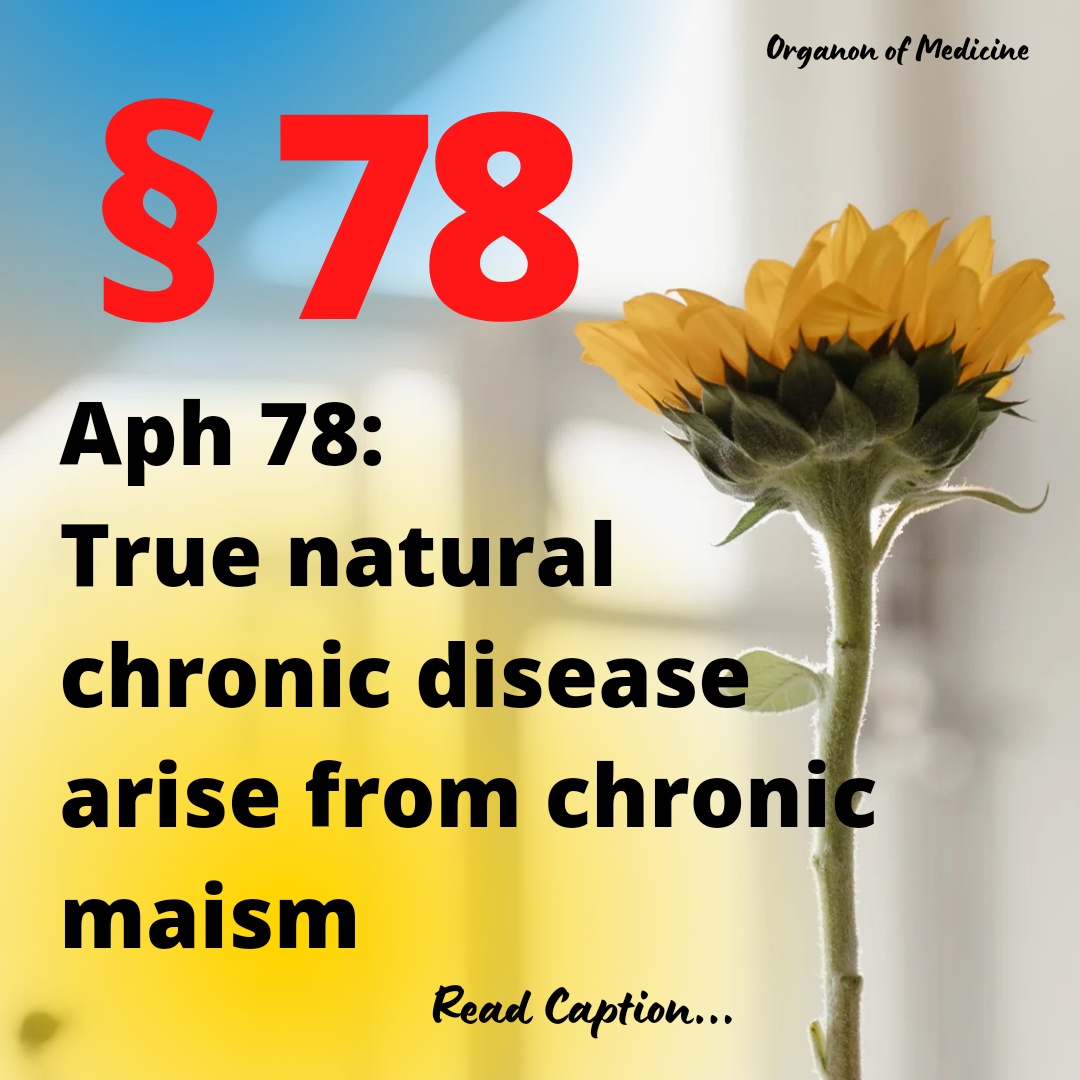Aphorism 78 explanation
True natural chronic diseases arise from chronic miasm.
Unlike inappropriately named chronic diseases, true chronic diseases are different, having following characteristics
1. True natural chronic diseases arise from chronic miasm.
2. Chronic diseases when left alone, does not fade away rather they increase and grow worse day by day without employment of its proper anti-miasmatic medicine.
3. Even the best mental and corporeal regimen, most robust constitution, best regulated mode of living and most vigorous energy of vital force is insufficient to eradicate it.
4. Except inappropriately named chronic diseases, real chronic diseases are numerous, and are a curse to human race.
In footnote Dr. Hahnemann says that natural chronic diseases did not leave the organism itself but during youth when vital energy is vigourous, person seems to be unaffected by it and seems to be in perfect health. But, later the diseases are sure to appear in proportion to weakened vital force.

Comments
Post a Comment